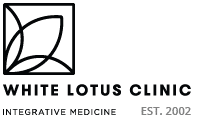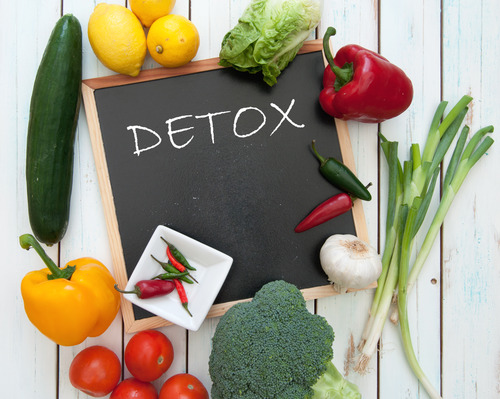What is Detoxification?
Detoxification is a process that occurs naturally in the body, it is a process that is critical for survival. The main organs of detoxification are the liver, kidneys, digestive system, respiratory system and the skin. Each of these organs perform different functions that allow for internal waste products (products of metabolism), and external exposures (xenobiotics) to be effectively and efficiently removed from the body.
In a healthy person, that is not ill, genetically predisposed, or over burdened (more of that later), the xenobiotics that we take in are processed, some leaving via the feces unabsorbed or as a component of bile, and the rest are absorbed to be processed. After absorption, these products move to the liver for elimination, or to the fat cells where they get locked away safely.
The liver is the main organ of detoxification in the body and it has two main steps that facilitate biotransformation. In phase 1 of liver detoxification xenobiotics undergo a process of oxidation, reduction and hydrolysis. All of this to say, it creates intermediary products, reactive oxygen species, that can interact at the cellular level to cause damage if not quenched. That is where Phase 2 comes into play. The second phase of liver detoxification is known as the conjugation step. Here reactions such as methylation, acetylation, glutathione conjugation etc, take the reactive intermediate products and turn them into water soluble derivatives that can be excreted via the kidneys (urine), or bile (poop).
Although it is a complex system, detoxification is again, a natural and necessary human function.
You are probably asking your self, “if it is natural then why do we need to take supplements, or consume funky drinks to make it work?”.
Answer: you don’t. It works or you wouldn’t be alive.
Should People do Detoxes?
This is a highly debated subject in the medical literature, do we need to supplement the bodies natural detoxification systems in order to properly process xenobiotics?
As a society we are exposed to thousands, if not hundreds of thousands, of toxic chemicals everyday – far more than we would have ever handled in our natural environment. This is thousands, if not hundreds of thousands, of chemicals that our body has to process and detoxify to prevent us from having negative cardiovascular, neurological, endocrine and metabolic afflictions.
There is an infamous statement, that “your genes load the gun, and the environment pulls the trigger”. This meaning, with specific genetic predispositions, accompanied by environmental exposure, there is the potential for an increased risk of certain chronic diseases. Links have been found between Bisphenol A and metabolic diseases such as diabetes, cardiovascular and liver disease(1). Furthermore, chronic exposure to certain herbicides and heavy metals such as mercury, lead, and cadmium, can contribute to mitochondrial damage, type 2 diabetes, insulin resistance, hormonal dysregulation and many other chronic diseases (2,3,4). Mitochondria are organelles responsible for energy production, thyroid and adrenal function, gastrointestinal health and follicle (egg) health (to name a few!).
In addition to this research linking exposure to disease, liver supporting nutraceuticals can protecting against the harmful effects of free radicals lingering in the system after processing in phase 1. N-acetyl cysteine, a precursor of glutathione, is a anti-inflammatory agent that also helps with liver detoxification(5). Indole-3-carbonol (I3C from cruciferous vegetables) and broccoli sprouts are antioxidants that may offset damaging effects of air pollution and are involved in the metabolism of estrogen (6,7).
Who Should be Concerned About Environmental Pollutants?
If you live in a big city, breath air, drink city water or eat non-organic meat and vegetables from time to time you are likely a candidate for detoxification support. Additionally, a small list of symptoms and conditions associated with increased xenobiotic exposure, or decreased elimination, is listed below:
- Headaches
- Brain Fog or Poor Memory
- Fatigue
- Difficulty Regulating Weight
- Type 2 Diabetes or Disglycemia
- Endometriosis
- Digestive Issues (constipation)
- Food Sensitivies
- Allergies
- Vascular Disease
Additionally, it is known that in any condition that is associated with infection, or inflammation, metabolism of xenobiotics in significantly decreased, via decreases in CYP450 enzymes (13-15). This puts people at an increased risk and supervised detoxification support can be considered.
Foundations of Nutrition and Lifestyle Are Important
Eliminate common food triggers, reducing inflammation and gastrointestinal distress: Sugar, and highly processed foods and oils should be minimized, and if reactions occur to gluten, dairy, or other foods they should also be avoided.
Add in plenty of organic leafy greens and brassica vegetables (broccoli, cauliflower, cabbage, kale) for their folate and sulfur content (as well as fiber for the GI tract). Also focus on consuming as many richly colours fruits and vegetables as possible. The polyphenols and anthocyanadins that create the colours have antioxidant properties.
Drink plenty of clean water, adding lemon or lime to taste.
Add a fiber supplement, such as chia, flax or psyllium if you don’t have a well-formed daily bowel movement.
Try to get your sweat on, adding moderate exercise.
References
- Vom Saal, F. S. & Myers, J. P. Bisphenol A and risk of metabolic disorders. JAMA 300, 1353–5 (2008).
- Lim, J.-S., Lee, D.-H. & Jacobs, D. R. Association of brominated flame retardants with diabetes and metabolic syndrome in the U.S. population, 2003-2004. Diabetes Care 31, 1802–7 (2008).
- Stohs, S. J. & Bagchi, D. Oxidative mechanisms in the toxicity of metal ions. Free Radic. Biol. Med. 18, 321–36 (1995).
- Liu, J., Qu, W. & Kadiiska, M. B. Role of oxidative stress in cadmium toxicity and carcinogenesis. Toxicol. Appl. Pharmacol. 238, 209–14 (2009).
- Kerksick, C. & Willoughby, D. The antioxidant role of glutathione and N-acetyl-cysteine supplements and exercise-induced oxidative stress. J. Int. Soc. Sports Nutr. 2, 38–44 (2005).
- Kwak, M. K., Itoh, K., Yamamoto, M., Sutter, T. R. & Kensler, T. W. Role of transcription factor Nrf2 in the induction of hepatic phase 2 and antioxidative enzymes in vivo by the cancer chemoprotective agent, 3H-1, 2-dimethiole-3-thione. Mol. Med. 7, 135–45 (2001).
- Egner, P. A. et al. Rapid and sustainable detoxication of airborne pollutants by broccoli sprout beverage: results of a randomized clinical trial in China. Cancer Prev. Res. (Phila). 7, 813–23 (2014).
- Sears, M. E. & Genuis, S. J. Environmental determinants of chronic disease and medical approaches: recognition, avoidance, supportive therapy, and detoxification. J. Environ. Public Health 2012, 356798 (2012).
- Sears, M. E., Kerr, K. J. & Bray, R. I. Arsenic, cadmium, lead, and mercury in sweat: a systematic review. J. Environ. Public Health 2012, 184745 (2012).
- Heindel, J. J., Newbold, R. & Schug, T. T. Endocrine disruptors and obesity. Nat. Rev. Endocrinol. 11, 653–61 (2015).
- Martínez-Zamora, M. A. et al. Increased levels of dioxin-like substances in adipose tissue in patients with deep infiltrating endometriosis. Hum. Reprod. 30, 1059–68 (2015).
- Heilier, J.-F., Donnez, J. & Lison, D. Organochlorines and endometriosis: a mini-review. Chemosphere 71, 203–10 (2008).
- Woolbright, B. L. & Jaeschke, H. Xenobiotic and Endobiotic Mediated Interactions Between the Cytochrome P450 System and the Inflammatory Response in the Liver. Adv. Pharmacol. 74, 131–61 (2015).
- Renton, K. W. Regulation of drug metabolism and disposition during inflammation and infection. Expert Opin. Drug Metab. Toxicol. 1, 629–40 (2005).
- Renton, K. W. Hepatic drug metabolism and immunostimulation. Toxicology 142, 173–8 (2000).





